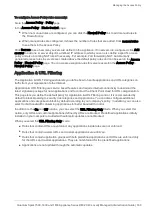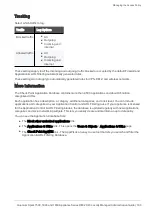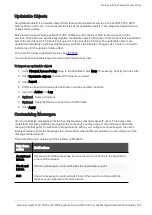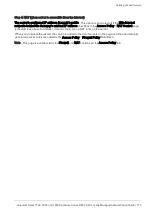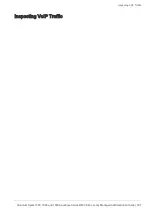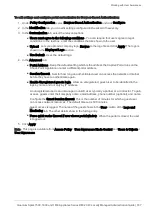
Defining Firewall Servers
Quantum Spark 1500, 1600 and 1800 Appliance Series R80.20.40 Locally Managed Administration Guide | 172
Step 2: Server Definitions
1. Enter a Name, IP address, and Comments (optional).
2. Select the options that apply to the server. For more information see
Users & Objects
>
Network
Objects
.
n
Allow DNS server to resolve this object name - When the gateway is the DNS server for your
internal networks the name of the server/network object will be translated to its IP address if
this option is selected.
n
Exclude from DHCP service - The internal DHCP service will not distribute the configured IP
address of this server/network object to anyone.
l
Reserve IP address in DHCP service for MAC - The internal DHCP service will distribute
the configured IP address only to this server/network object according to its MAC
address.
l
Enter the MAC address - This is required for IP reservation. When you create the object
from the Active Devices page, the MAC address is detected automatically.
Step 3: Access
1. Select the zones from which the server is accessible:
n
All zones (including the Internet) - Select this option to create a server that anyone from outside
the organization can access. This option requires configuring how the server is accessible
through NAT (in the next step).
n
Only trusted zones (my organization) - Select the applicable checkboxes. You can override
these settings by adding manual access rules.
l
LAN - Physical internal networks.
l
Remote Access VPN users - Users that connect from their homes/mobile devices to the
office.
l
Secure wireless networks - Password protected networks, not including guest networks.
l
DMZ - The network physically connected to the DMZ port when it is not used for a
secondary Internet connection.
Note - DMZ is not supported in 1530 / 1550 appliances.
l
Remote VPN sites - Networks defined behind gateways to remote VPN sites.
2. If you do not want the server to be accessible to pings, clear the Allow access to server in the ICMP
(ping) checkbox.
3. Select the logging policy of traffic to the server:
n
Log blocked connections
n
Log accepted connections



